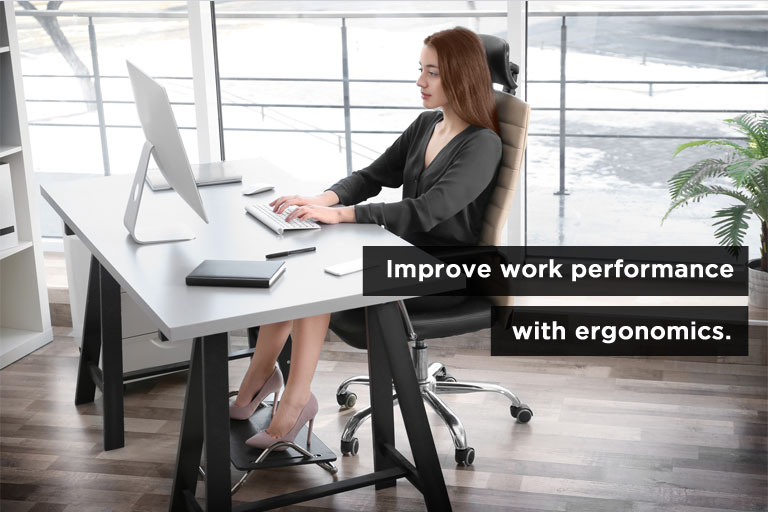Workstation layout is one of the major factors that influence workplace injury. A solution to this growing concern, ergonomics addresses the workers’ performance, comfort, and work space effectiveness.
The Purpose of Ergonomics
The main goal of ergonomics is to ensure that people are physically and mentally comfortable in their work environment. Numerous disciplines including psychology, engineering, biomechanics, and physiology have encouraged ergonomic engineers to design tools and formulate theories to better the lives of workers everywhere. Studies have suggested the following ways to reduce injury:
1. Proper Posture
Bad posture poses a wide range of risks. Slouching, stooping and leaning on one leg puts unnecessary strain on back muscles. Similarly, a forward head tilt position makes the shoulder stiff, leading to neck pain. Not only does bad posture lead to discomfort, it distracts the worker from completing any task at hand.

2. Stretching & Recovery time
Continuous, extensive work time at a desk or workspace without a break can greatly reduce work efficiency. Short breaks can improve the mood of employees and allow them to rejuvenate. This time can be used to stretch and relax arms and legs, which might otherwise become sore.
3. Ergonomic Chair Tool
Staying in one position for too long can lead to stiffness and fatigue. The best chairs support the lower back preventing painful aches. The ergonomic chair comes with many features like adjustable seat height to meet the unique needs of every individual.

If you are experiencing any physical discomfort or find it difficult to relax, schedule an appointment today at (905) 497-1311. Brampton Physiocare & Wellness Clinic provides acupuncture, massage therapy, chiropractic treatment, and more.







